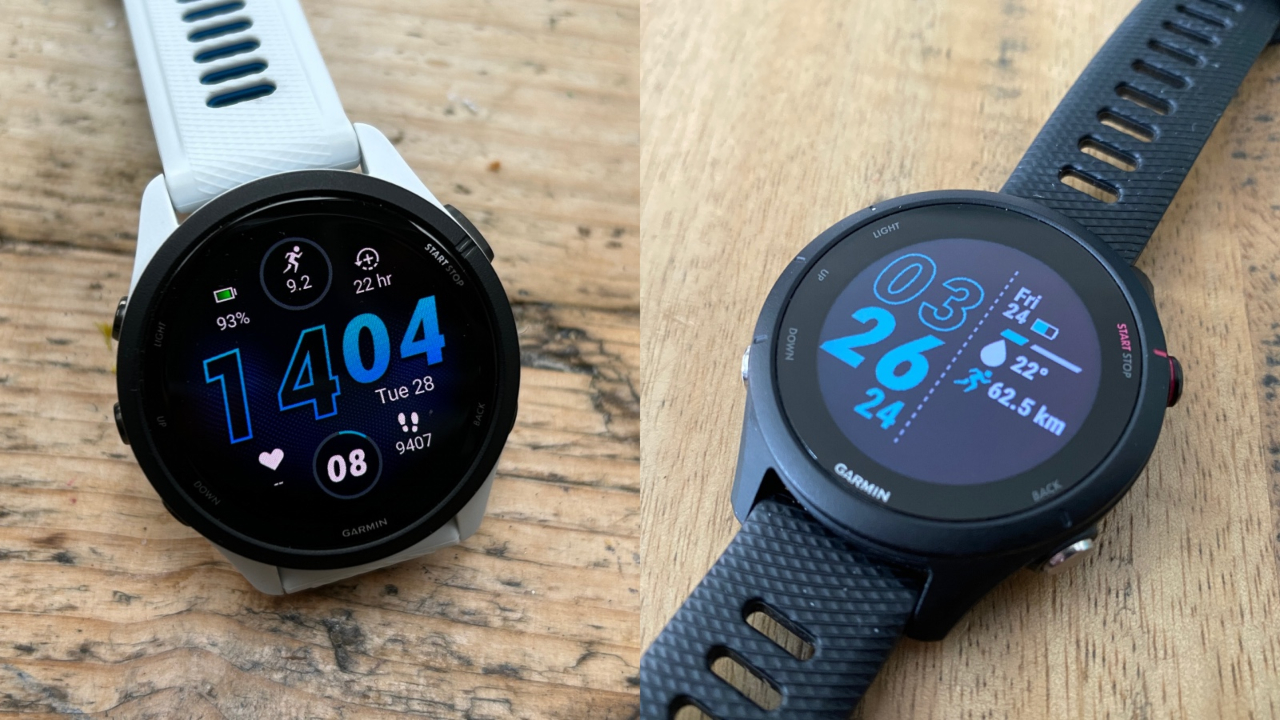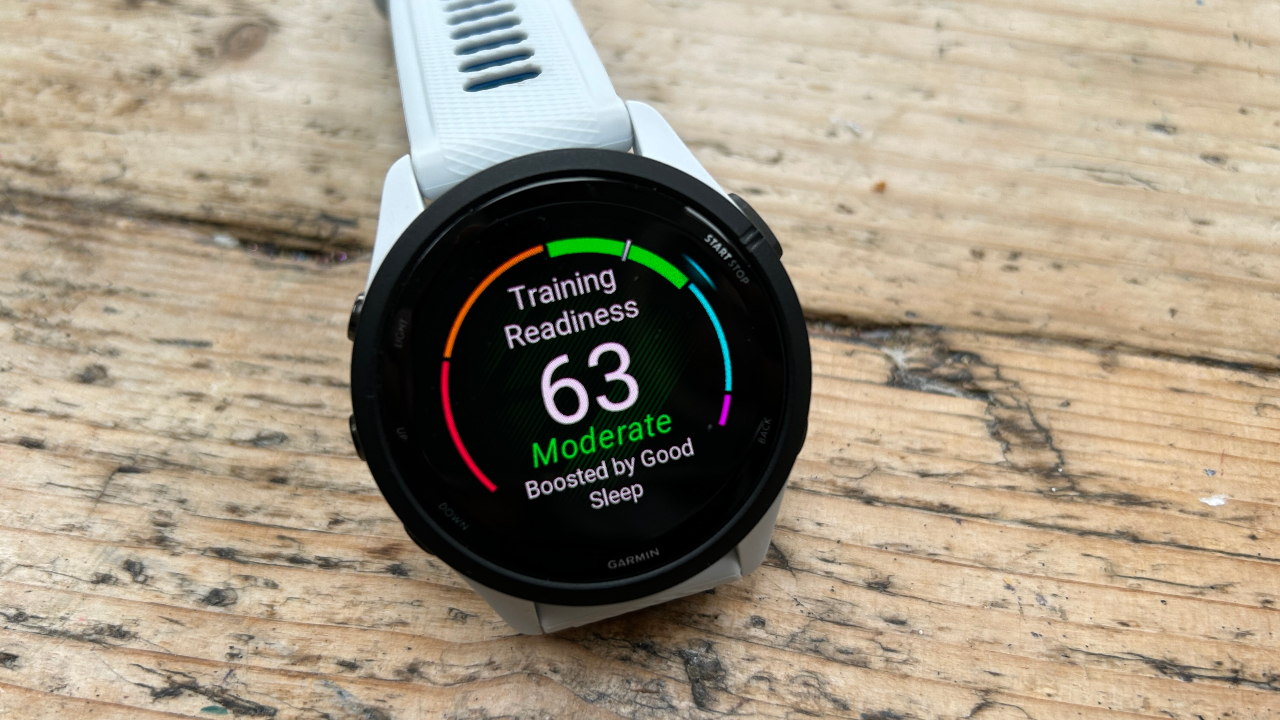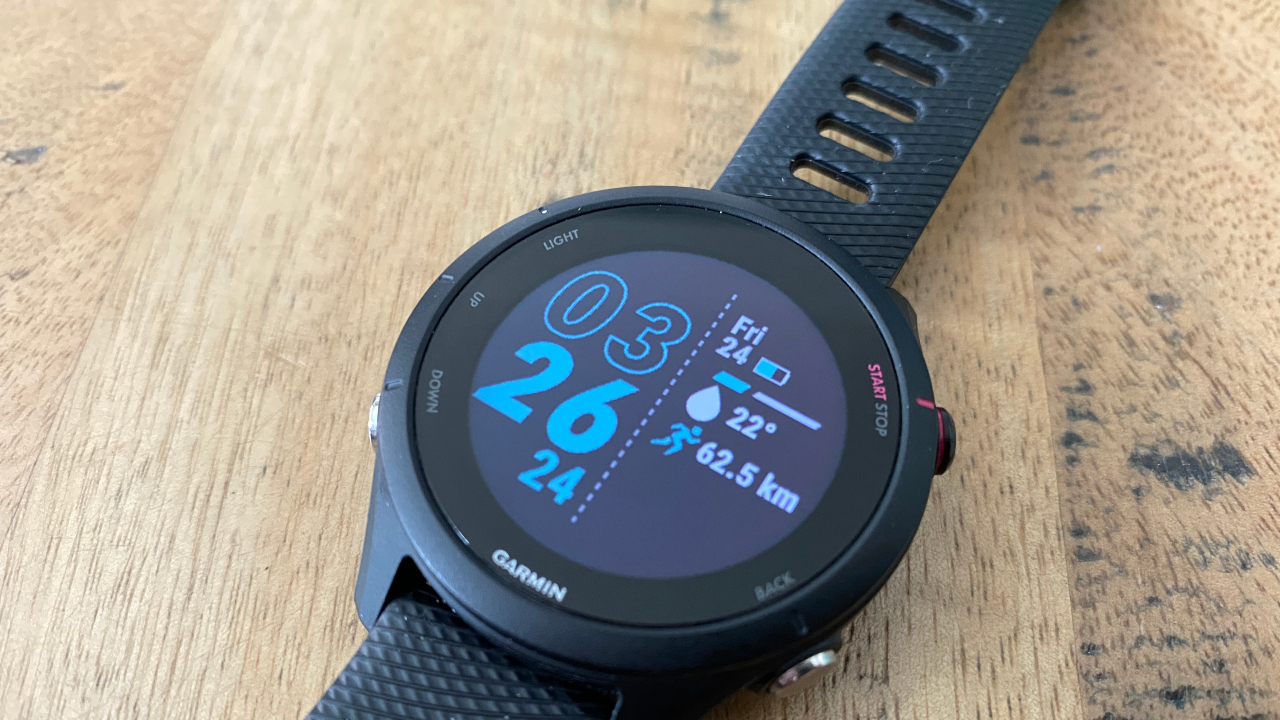Garmin Forerunner 265 Vs Garmin Forerunner 255: Should You Upgrade?
The new Forerunner 265 has a vibrant AMOLED screen, but the older Forerunner 255 offers better value

The Garmin Forerunner 265 is one of the best sports watches and one of the best running watches. In fact, it has a good case for being named the best in both categories. However, the older Garmin Forerunner 255 offers most of the key features on the Forerunner 265, and is cheaper, making it the better-value pick for those in need of a multisport watch.

The Forerunner 265 has a bright AMOLED display and Garmin’s training readiness measure, along with all the other excellent features on the 255.
Pros
- AMOLED display
- Training readiness
- Accurate tracking
Cons
- Shorter battery life than 255
- More expensive than 255

So, it doesn’t have the bright AMOLED screen of the 265, but the Forerunner 255 remains an excellent multisport watch that delivers accurate tracking and the essentials you need to track your activities.
Pros
- Better value than 265
- Longer battery life
- Often in sales
Cons
- No training readiness
- Screen is less bright
Garmin Forerunner 265 vs Garmin Forerunner 255: Price And Availability
The Garmin Forerunner 265 launched in March 2023 and costs $449.99 in the US and £429.99 in the UK. Both sizes of the watch cost the same, and there is no cheaper non-music version.
The Forerunner 255 comes in two sizes and in music and non-music versions. The music versions cost $399.99/£349.99 and the non-music watch is $349.99/£299.99. The watch is often in sales since the release of the Forerunner 265.
How I Tested These Watches
I tested the Garmin Forerunner 265 and the smaller Garmin Forerunner 255S for our full reviews, using both for several weeks to track all of my training. I am a 2hr 28min marathoner and usually run around 50-60 miles a week, as well as doing regular strength and yoga workouts, and occasional bike rides.
Design
The biggest difference between the two watches is apparent when you look at them. The Forerunner 255 has a memory-in-pixel screen, while the Forerunner 265 has an AMOLED touchscreen that’s much brighter, especially when indoors, or under cloud or tree cover. The resolution of the display has been increased, going from 218 x 218 pixels to 360 x 360 pixels for the smaller watch, and from 260 x 260 pixels to 416 x 416 pixels for the larger watch.
I love the AMOLED touchscreen on the Forerunner 265. It makes it a more enjoyable watch to interact with throughout the day and is brighter on runs in most conditions, especially in dappled light. The Forerunner 255’s screen is still clear to read, though, and easier to see in bright sunlight when wearing sunglasses.
The screen size hasn’t changed between generations—it’s 1.1in on the 255S and 265S watches and 1.3in on the 255 and 265. The case sizes are 46mm and 42mm for the 265 and 265S, and 46mm and 41mm for the 255 and 255S.
Sign up for workout ideas, training advice, reviews of the latest gear and more.
Another change in the design is that the Forerunner 265 comes with a charger that plugs into USB-C ports, while the Forerunner 255’s charger has a regular USB connector. The port on the watches stays the same between generations though.
The two watches have the same sensors, including a barometric altimeter and a pulse oximeter, and they both have a water resistance rating of 5 ATM. Both offer Garmin’s multi-band GPS tracking, which is more accurate than GPS-only tracking.
Battery Life
The addition of an AMOLED screen to the Forerunner 265 means that it has a shorter battery life than the Forerunner 255. With the new watch, it’s the smaller 265S that lasts longer because its smaller screen is drawing less power.
The battery life of the 265 watches is shorter if you enable the always-on screen outside workouts than if you use its raise-to-wake feature, whereas the Forerunner 255’s screen is always on.
| Row 0 - Cell 0 | Garmin Forerunner 255S | Garmin Forerunner 255 | Garmin Forerunner 265S | Garmin Forerunner 265 |
| Smartwatch mode | 12 days | 14 days | 15 days (5 days always-on) | 13 days (5 days always-on) |
| GPS-only | 26 hours | 30 hours | 24 hours | 20 hours |
| GPS-only with music | 6 hours | 7 hours | 7.5 hours | 7 hours |
| Multi-band GPS | 13 hours | 16 hours | 15 hours | 14 hours |
| Multi-band GPS with music | 5 hours | 6 hours | 6 hours | 6 hours |
During activities there is not a big difference in the battery life of the two watches, especially if you plan on using them to listen to music during workouts. However, outside of your training the Forerunner 265 drains faster if using the always-on screen.
On average, the Forerunner 265 lasted around four to five days for me on a charge with the always-on screen enabled—while tracking outdoor runs every day with notifications coming in from my phone. Meanwhile, the Forerunner 255S lasted around six days on a charge in the same conditions.
The older watch will last you longer, especially the large Forerunner 255, but it’s not a dramatic difference, so opting for the AMOLED screen of the 265 doesn’t mean you’ll end up charging the watch twice as much.
Sports Tracking And Training Analysis
Most of the sports tracking features on the two watches are the same, with both offering top-tier GPS accuracy using the multi-band setting. They are full triathlon watches and offer a high level of customization of your data screens, along with suggested workouts each day and training plans for 5K, 10K and half marathon running events through Garmin Coach.
One difference in the sports tracking is that the Forerunner 265 can measure running dynamics stats from the wrist without needing to be paired with an external sensor. This includes stats vertical oscillation, ground contact time—which you can only get on the Forerunner 255 when it’s paired with a Garmin running pod or heart rate monitor.
These stats can be interesting, although the bigger difference between the watches comes in training analysis; specifically, the Forerunner 265 features Garmin’s training readiness stat. This is a color-coded score out of 100 that suggests how ready you are to train at any given moment, based on factors like recent training history, heart rate variability, sleep and your suggested recovery time for workouts.
There is still a lot of useful training analysis on the Forerunner 255, which measures your heart rate variability, but Garmin has opted not to give it the readiness feature (much to my chagrin). Readiness is my favorite training analysis feature from any brand, since it boils down a lot of information into one clear stat that is helpful for guiding your training. It’s not essential, but training readiness is the biggest reason to upgrade to the Forerunner 265 other than the AMOLED screen.
More Garmin Forerunner 265 Versus
More Garmin Forerunner 255 Versus

Nick Harris-Fry is a journalist who has been covering health and fitness since 2015. Nick is an avid runner, covering 70-110km a week, which gives him ample opportunity to test a wide range of running shoes and running gear. He is also the chief tester for fitness trackers and running watches, treadmills and exercise bikes, and workout headphones.
